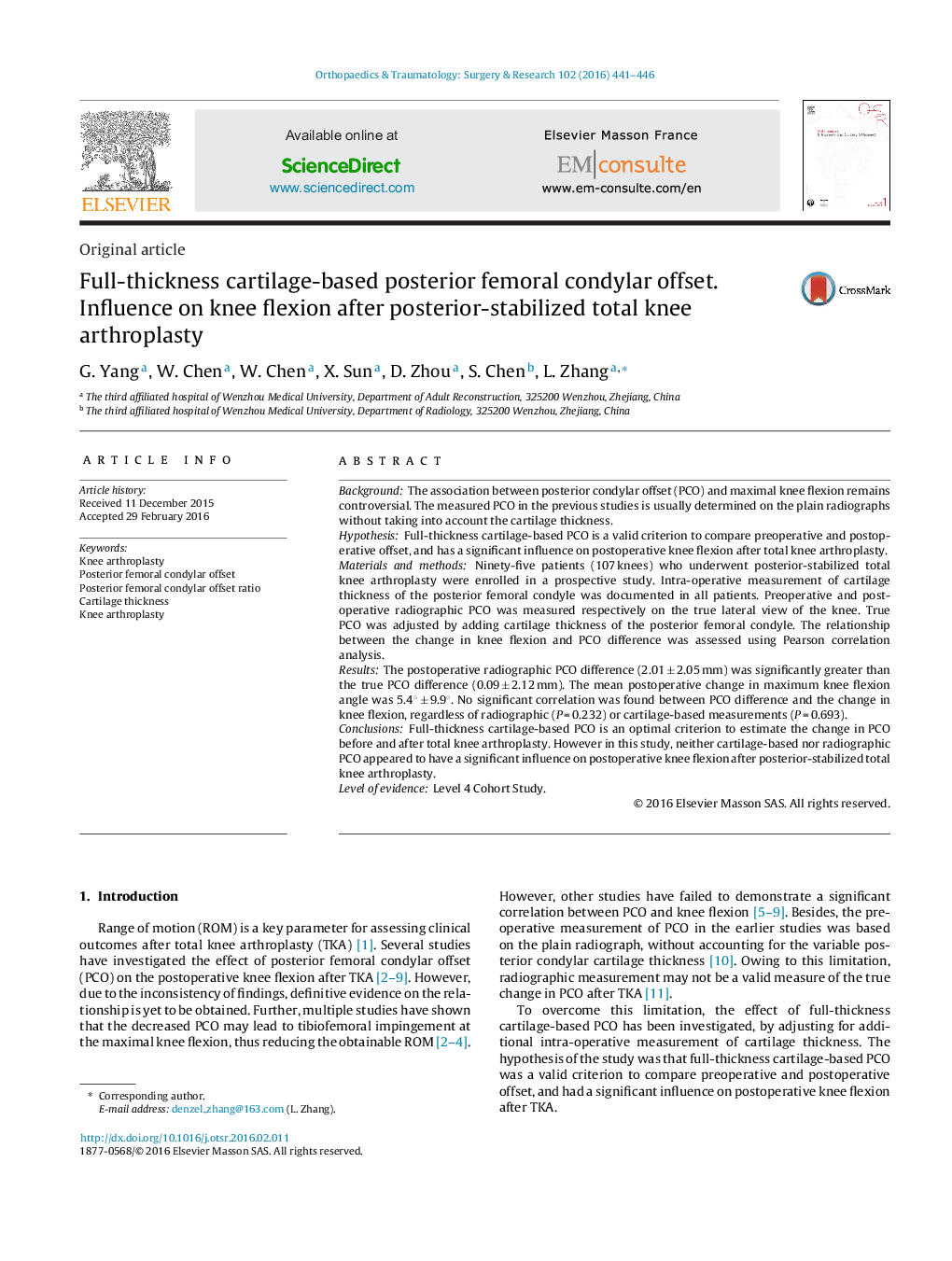| کد مقاله | کد نشریه | سال انتشار | مقاله انگلیسی | نسخه تمام متن |
|---|---|---|---|---|
| 4080850 | 1267569 | 2016 | 6 صفحه PDF | دانلود رایگان |
BackgroundThe association between posterior condylar offset (PCO) and maximal knee flexion remains controversial. The measured PCO in the previous studies is usually determined on the plain radiographs without taking into account the cartilage thickness.HypothesisFull-thickness cartilage-based PCO is a valid criterion to compare preoperative and postoperative offset, and has a significant influence on postoperative knee flexion after total knee arthroplasty.Materials and methodsNinety-five patients (107 knees) who underwent posterior-stabilized total knee arthroplasty were enrolled in a prospective study. Intra-operative measurement of cartilage thickness of the posterior femoral condyle was documented in all patients. Preoperative and postoperative radiographic PCO was measured respectively on the true lateral view of the knee. True PCO was adjusted by adding cartilage thickness of the posterior femoral condyle. The relationship between the change in knee flexion and PCO difference was assessed using Pearson correlation analysis.ResultsThe postoperative radiographic PCO difference (2.01 ± 2.05 mm) was significantly greater than the true PCO difference (0.09 ± 2.12 mm). The mean postoperative change in maximum knee flexion angle was 5.4° ± 9.9°. No significant correlation was found between PCO difference and the change in knee flexion, regardless of radiographic (P = 0.232) or cartilage-based measurements (P = 0.693).ConclusionsFull-thickness cartilage-based PCO is an optimal criterion to estimate the change in PCO before and after total knee arthroplasty. However in this study, neither cartilage-based nor radiographic PCO appeared to have a significant influence on postoperative knee flexion after posterior-stabilized total knee arthroplasty.Level of evidenceLevel 4 Cohort Study.
Journal: Orthopaedics & Traumatology: Surgery & Research - Volume 102, Issue 4, June 2016, Pages 441–446
